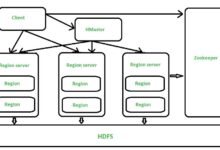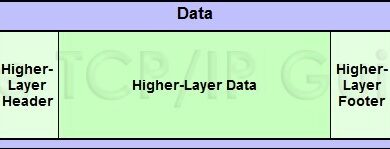What’s the Difference Between VHDL and Verilog?

VHDL and Verilog are two popular hardware description languages (HDLs) for digital circuit design. These languages allow engineers to model, simulate, and eventually design hardware behavior for digital systems. Although both serve the same function of describing hardware, each language has its own origins, architecture, and design philosophy. Developers can select the language that most effectively fulfills the technical specifications of their project by comprehending the distinction between VHDL and Verilog. Each language has capabilities that are specific to certain sorts of applications. Thus, making an informed decision is critical for circuit design efficiency and effectiveness.
What is VHDL?
Origins and Purpose of VHDL
A program run by the United States Department of Defense in the 1980s gave rise to VHDL, which stands for VHSIC Hardware Description Language. Its original intent was to facilitate the pre-implementation testing and design of digital systems. Developed to facilitate intricate circuit designs, VHDL is well-liked in sectors like aerospace and defense due to its emphasis on high dependability and comprehensive simulation. Engineers are able to properly describe and validate system behavior thanks to its rigid, modular structure. Applications where precision is paramount, and error-checking is integral to the design process are well-suited to VHDL due to its structure and strong simulation capabilities.
Key Features of VHDL
Case-insensitivity refers to the fact that VHDL does not care whether a character is uppercase or lowercase. Furthermore, it is compatible with dataflow, behavioral, and structural modeling, among others. The versatility of VHDL makes it suitable for a wide range of design requirements, from basic circuits to intricate systems. Thanks to its modular design and support for libraries, generics, and configurations, VHDL is an excellent choice for projects of any size. With its many useful capabilities, VHDL is a great choice for projects that require a highly configurable and modular design framework. It helps developers to reuse code, speed testing, and organize designs effectively.
Use Cases and Advantages of VHDL
VHDL is often used in areas where high dependability and thorough testing are required, such as aerospace, automotive, and defense. Its rigid syntax and strong type enable extensive error-checking, which decreases the possibility of mistakes in large, complicated systems. VHDL also offers a wide choice of data formats, supporting sophisticated design needs and thorough simulations. This makes it helpful in tasks that demand complicated reasoning and testing rigor. For applications needing great accuracy and dependability, VHDL is well-suited, particularly when working with sophisticated, mission-critical hardware systems that must operate flawlessly.

What is Verilog?
Origins and Purpose of Verilog
The C-like syntax of Verilog makes it accessible to engineers familiar with software programming, shortening the learning curve for those transitioning to hardware design. Its primary use is hardware modeling for simulation and synthesis, enabling developers to test digital designs before physically implementing them. Fast development cycles are prioritized in consumer electronics and other fields using Verilog because it meets the needs of general applications that require rapid prototyping and because of its emphasis on ease of use and quick simulation.
Key Features of Verilog
Modules are the basic building elements of Verilog, a case-sensitive language. Input and output ports are defined by modules, which encapsulate functionality into clearly understandable components. Engineers coming from a software background will find it easy to take up because of its syntax, which is very similar to C. By utilizing Verilog’s hardware simulation capabilities, engineers can virtually prototype and test circuit designs prior to fabrication. It works well with iterative design processes because of its speedy prototyping and simplified testing. Because of its simple, module-based structure, Verilog facilitates effective design organization and testing.
Use Cases and Advantages of Verilog
Because of its easy syntax and fast simulation times, Verilog finds widespread use in consumer electronics, communications, and related domains. Projects necessitating quick development cycles and prototyping are well-suited to its efficient structure and fast simulation capabilities. New designers may pick up Verilog fast thanks to the language’s easy syntax, which reduces the barrier to entry. Verilog offers a decent compromise between substantial modeling capabilities and ease of learning, making it an attractive option for tasks that do not have intensive error-checking or sophisticated data handling. Because of this, it is well-liked by sectors that require rapid product launches and regular design revisions.
How to Do VHDL and Verilog Differ?
Syntax and Structure Comparison
The syntax and approach to structure in VHDL and Verilog are different. The main building blocks of VHDL, which employ case-insensitive grammar, are entities and architectures. The case-sensitive and module-based programming style of Verilog is similar to that of C. VHDL’s provision for unique data types increases its versatility, giving it a better fit for complicated designs. To simplify the language, Verilog limits users to predefined data types, which limits versatility. Because of these structural differences, VHDL is less user-friendly and necessitates more planning and discipline, whereas Verilog is better suited to applications that demand quick development.
Simulation and Synthesis Differences
The ways in which VHDL and Verilog handle synthesis and simulation are also different. Thanks to its focus on high-level abstraction, VHDL enables thorough verification and error-checking through comprehensive simulations. In fields where precision and testing are of the utmost importance, this method works wonderfully. The simulation speed of Verilog, on the other hand, makes it ideal for rapid prototyping and iterative development. Verilog is a good choice for applications that require short testing cycles because of its speed-oriented nature. While VHDL is more suited for complex projects due to its high-level abstraction, Verilog is better suited for simpler, high-turnaround projects because of its rapid and practical synthesis capabilities, which allow for streamlined testing.
Performance and Usability in Design
varying projects call for varying levels of performance and ease of use from VHDL and Verilog. Large, complicated systems that necessitate careful organization are well-suited to VHDL’s organized approach, which includes libraries, configurations, and modularity. Because of its C-like syntax and emphasis on simplicity, Verilog is more approachable and easy to use, particularly for beginners. For tasks that require pinpoint accuracy, VHDL’s robust error-checking and flexibility are in handy. User-friendly and with an easy-to-understand syntax, Verilog allows for rapid development, which is great for consumer electronics. When reliability and speed are paramount, VHDL is the way to go, whereas Verilog is the way to go for projects that value simplicity and speed.
Which Language is Right for Your Project?
Choosing Based on Project Type
The type of project usually dictates which VHDL and Verilog are better suited. The defense, automotive, and aerospace industries, among others, embrace VHDL because of its high precision, extensive error-checking, and robust testing capabilities. The sectors that benefit from rapid development cycles, such as consumer electronics and communications, are perfect fits for Verilog due to its simple syntax and fast simulation capabilities. Certain kinds of projects are better suited to certain languages because of their individual characteristics and strengths. Whether to use VHDL or Verilog depends on the project’s technical requirements and accuracy standards.
Compatibility with Development Tools
When deciding between Verilog and VHDL, it is important to consider how well they work with EDA tools. While many tools are compatible with both languages, Verilog is often more widely used by industry-standard EDA tools. On the other hand, VHDL is frequently well-supported by dedicated tools for industries that place a premium on reliability, such as the military. It is possible to streamline the design process by selecting a language that is compatible with the selected development tools. Assessing a project’s tool needs guarantees software integration, which in turn improves workflow efficiency and yields the best results.
Community and Learning Resources
Both the VHDL and Verilog communities have a lot to offer, although Verilog might have more users because of how popular it is in academic and consumer electronics settings. While VHDL’s resources tend to focus on more complicated, specialist tasks, Verilog’s easier syntax and structured learning tools make it accessible to beginners. The VHDL community is very focused on tough applications because the language is well-liked by businesses that need high levels of assurance. Community participation is a valuable resource for designers since languages like Verilog and VHDL offer different starting points for learners. Verilog is easy for newcomers to understand, while VHDL helps with more complicated applications that require deeper insights.
Conclusion
Understanding the “vhdl and verilog difference” is essential for selecting the right language for a project’s requirements. VHDL’s structured, modular approach makes it ideal for projects demanding rigorous accuracy and error-checking, often found in critical applications. Verilog is well-suited for consumer electronics and applications that require rapid prototyping because of its simpler syntax and speedy simulation capabilities. Better digital systems are the outcome of optimized design workflows made possible by selecting a language that is in sync with project needs, development tools, and industry standards. Designers may make better judgments that boost productivity and project success when they know the strengths of each language.






